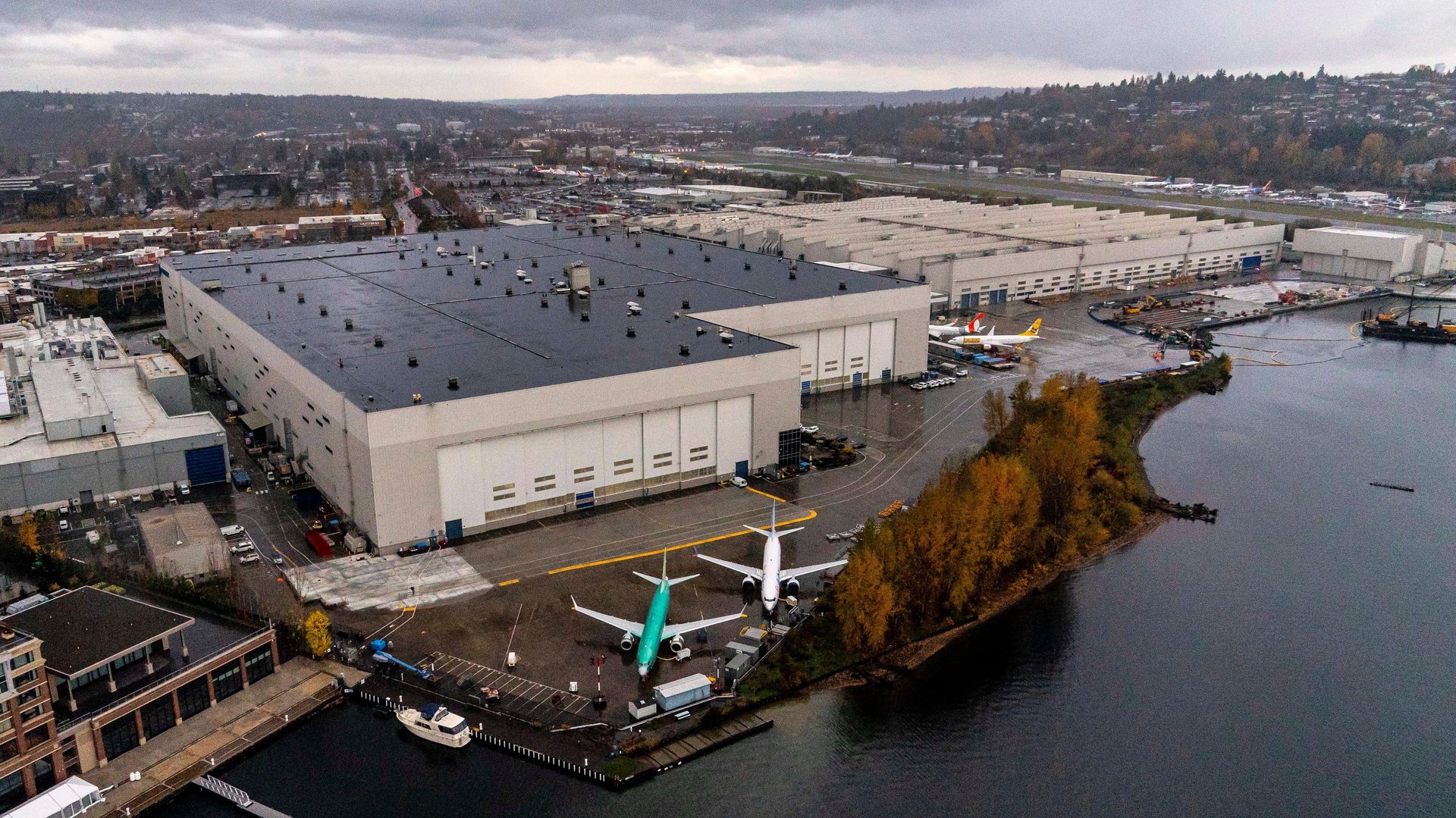Boeing is bracing for more US government "boots on the ground"
The US Federal Aviation Administration is sending in more safety inspectors, it announced

Twenty safety inspectors from the US Federal Aviation Administration (FAA) are heading to Renton, Washington, and they’re not there to visit the Jimi Hendrix Memorial.
Suggested Reading
FAA head Michael Whitaker is heading to Capitol Hill today (Feb. 6) to tell Congress that the agency is committing more resources to inspecting Boeing’s production facilities in the wake of repeated problems with its 737 Max planes. Reuters reports that in addition to the 20 inspectors in Renton, six more are headed to fuselage contractor Spirit AeroSystems in Wichita, Kansas.
Related Content
“Going forward, we will have more boots on the ground closely scrutinizing and monitoring production and manufacturing activities,” Whitaker said in a statement shared with Quartz by the FAA.
“Aggressive” oversight for Boeing
Once upon a time, the FAA’s relationship with Boeing was much cozier — so cozy that the company was allowed to “self-certify” its own aircraft as safe. But after multiple 737 Max 8 planes fell out of the sky in 2019, flyers — and regulators — called for scrutiny.
In a Department of Transportation inspector general’s report released in 2021, the government found that “weaknesses in FAA’s certification and delegation processes hindered its oversight of the 737 Max 8.” Though the government ramped up scrutiny of all planes in the wake of the crashes, in January a door blew off a 737 Max 9 mid-flight and unleashed a new wave of anxiety.
“Wasn’t the 737 line the most-scrutinized production line in the world?” an analyst asked on a recent Boeing earnings call. “So what happened to get to where we got today?” (Chief executive David Calhoun responded: “I understand your underlying context for the question, but we take exception to that premise.”)
In any case, the FAA’s Whitaker is telling Congress that his agency will be “aggressively expanding oversight of new aircraft with increased floor presence at all Boeing facilities,” and “capping expanded production of new Boeing 737 MAX aircraft to ensure accountability and full compliance with required quality control procedures.”